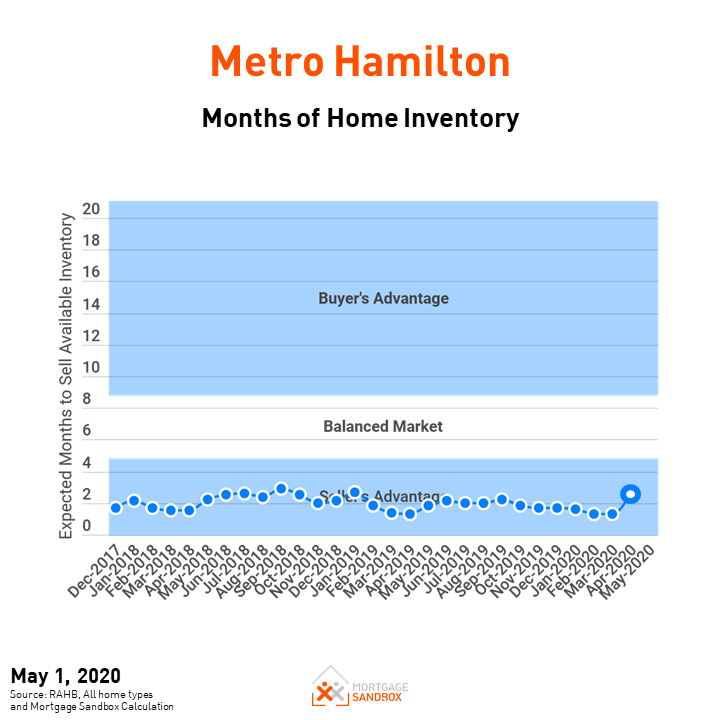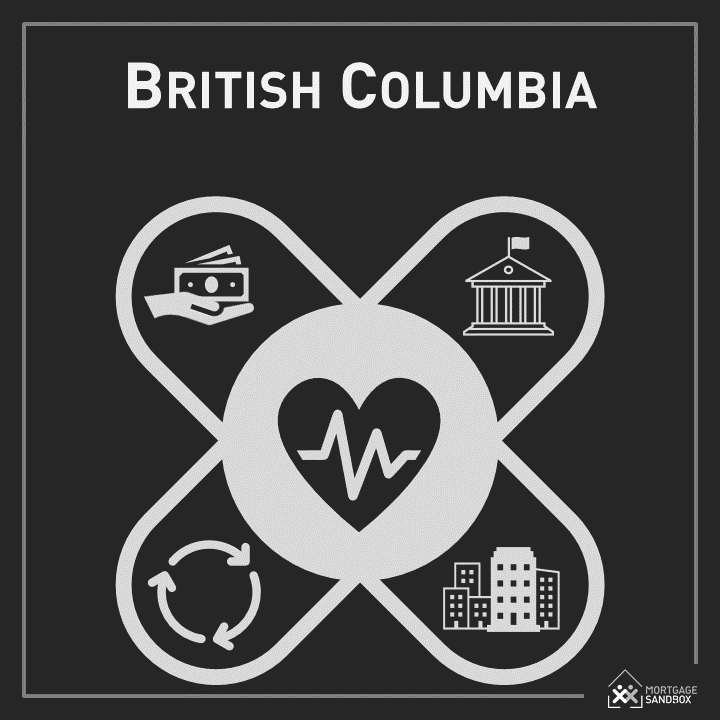5 Forces Driving Ontario Home Prices
At the highest level, supply and demand set house prices and all other factors simply drive supply or demand. At Mortgage Sandbox, we have created a five-factor framework for gathering information and performing our market analysis. The five key factors are affordability, capital flows, government policy, supply, and popular sentiment.
In the long-run, the market is fundamentally driven by economic forces, but in the short-run, sentiment can drive prices beyond economically sustainable levels.
1. Affordability
Affordability is a function of:
Home Price Changes: Changes in the market value of the desired home.
Savings-Equity: How much disposable after-tax income you’ve been able to squirrel away plus any equity you have in your existing home.
Financing: Your maximum mortgage is calculated using income (i.e., how much money you can put toward mortgage payments) and interest rates (how big are the mortgage payments).
How have these changed lately?
Home Price Changes
Price growth reduces affordability and creates downward pressure on prices. Homeownership costs are considered unaffordable when they exceed 40% of household income.
In March 2020, homeownership costs in the GTA stood at 68% of the median household income, whereas in Ottawa, ownership costs were 39%. In other words, the GTA was beyond economic fundamentals, while Ottawa’s home prices were reaching the economic limit.
How will affordability change in the coming months?
Savings-Equity
Rents were rising faster than incomes, so first-time buyers struggled to come up with down payments.
To add insult to injury, anyone who managed to save a down payment and invested it in ‘blue chip stocks’ may now find out they’ll need to save for a few more years.
With the Coronavirus containment efforts, the banning of evictions, the conversion of AirBnBs into long-term rentals, and a halt to immigration, we believe rents will drop. That will allow renters to save more toward a future purchase when the market thaws.
Existing homeowners benefited from price appreciation, so they had more home equity, which they could use to buy a bigger home.
Financing
Median incomes have not changed materially, but employment levels are dropping. To mitigate the impact, the Bank of Canada has reduced rates dramatically, but mortgage qualifying interest rates have not fallen nearly as much.
Lower interest rates were a major factor driving up home prices between 2018 and 2019.
Job losses from Coronavirus containment efforts are a more powerful force than low mortgage rates. Without income, you can not qualify for a mortgage.
Canada shed nearly two million jobs in April, as the novel coronavirus pandemic tore through the Canadian economy. The official unemployment rate soared to 13% but it would have been 17.8% if the agency had included the 1.1 million Canadians who stopped looking for work — likely because the COVID-19 economic shutdown has limited job opportunities.
We expect the Coronavirus Recession to drag out at least until the end of 2020. Click here to find out why there is likely to be another wave of infections and a corresponding lock-down.
Overall Affordability
Overall, due to the impacts of the Coronavirus, homes are much less affordable than they were in 2019. The charts below are based on 2016 household income levels, however they illustrate the low poor affordability before the Coronavirus pandemic struck.
2. Capital Flows
These represent short-term investment, long-term investment, and recreational demand (i.e., homes not occupied full-time by the owner). Here is where foreign capital, real estate flippers, and dark money come into play. It also includes short-term rentals, long-term rentals, and recreational property purchases.
Capital inflows raise demand and put upward pressure on prices while capital outflows have the opposite effect. If capital sits invested in real estate nothing is bought or sold, it has no effect on the direction of prices.
Foreign Capital
Ontario implemented a 15% foreign buyer tax to reduce the distorting effect of Foreign Capital flows on local real estate.
Now with the travel bans that are part of Coronavirus containment efforts, we can expect there will be very little foreign investment in Canadian real estate.
Hong Kong Unrest
Some industry observers are speculating the fallout from Hong Kong residents’ clash with China’s government could put further pressure on the real estate markets of Vancouver and Toronto, as well-heeled expatriates and new Chinese immigrants seek safety in Canada.
The answer to this is complicated. The same story was told in August 2019 but the wave of immigrants never materialized. As well, if Canada suddenly accepted a surge in Kong Kong immigrants it is likely they would displace Mainland Chinese immigrants and immigrants from other geographies. It’s difficult to say whether arrivals from Hong Kong will be wealthier than the immigrants they’ve replaced and whether China will allow them to bring their wealth with them.
Canada’s relations with China deteriorated significantly in late 2018 after Ottawa arrested a Chinese high-tech executive on a U.S. extradition request. Accepting Hong Kong asylum seekers would be viewed by China as Canada acknowledging human rights abuse in a Chinese jurisdiction and this would further strain diplomatic and economic relations.
Long-term Rental Investors
Nearly 40% of Toronto’s condos are not owner-occupied, so rental investments are a significant driver of home prices. As it relates to our analysis, we expect domestic interest in long-term rental income properties will dry up so long as Coronavirus eviction bans are in place. The government has not developed an exit strategy for landlords with rent arrears when social isolation policies are lifted. How will tenants repay three to six months of rent arrears?
Rental investments are a significant driver of home prices. As it relates to our analysis, we expect domestic interest in long-term rental income properties to dry up for as long as Coronavirus eviction bans are in place. The government has not developed an exit strategy for landlords with rent arrears when social isolation policies are lifted. How will tenants repay three to six months of rent arrears?
As well, recent reports of rents falling across Canada will discourage new rental investment until rental rates stabilize.
Short-term Rental Hosts
We are watching short-term rentals closely because travel bans will effectively shut down short-term rentals for the next few months (Canada’s tourist high season).
In Toronto, the short-term rentals that survive the Coronavirus slow-down will then face new bylaws, restricting short-term rentals to Torontonians’ principal residence. These rules will likely be enforced with the help of condominium boards and neighbours.
Likewise, Ottawa was considering similar rules restricting short-term rentals to the occasional rental of a principal residence.
House Flippers
With Coronavirus containment efforts underway, house flipping will be very risky so we expect serial flippers will stay out of the market until they see a bottom to the market. Then they will try to pick up some bargains.
Dark Money
Dark money is the proceeds of crime or money that are transferred to Canada illegally. This includes money earned legitimately that is illegally transferred from countries with capital controls (e.g., China) and legitimate earnings moved from countries who are the subject of international sanctions (e.g., Iran, Russia, and North Korea).
In order to hide the illegal nature of the funds, it is laundered in the real estate market. Sometimes the true owner of the property is hidden by using a Straw Buyer and other times the property is owned by a shell company.
We see no evidence of a diminished role for dark money in local real estate.
Summary of Capital Flows
Capital inflows to real estate in 2019 were lower than three out of the four preceding years. 2020 will be the lowest in recent memory. In the medium-term, we expect a dramatic drop in capital flowing into Ontario real estate.
3. Government Policy
Governments were trying to engineer a ‘soft landing’, but now they are trying to protect against a housing crash by encouraging banks to allow borrowers to defer their mortgage payments up to six months.
COVID-19 Support Measures
Mortgage Payment Deferral:
A mortgage deferral is an agreement between the borrower and the lender to pause or suspend mortgage payments for a certain amount of time.
After the agreement ends, your mortgage payments return to normal. The mortgage payment deferral does not cancel, erase, or eliminate the amount owed on your mortgage. The borrower still accrues interest that will have to be paid.
A Canadian with a $250,000 mortgage who defers their mortgage by six months adds approximately $4,000 in accrued interest to their mortgage balance.
Eviction Bans and Suspensions
The Ontario government has suspended the enforcement of evictions indefinitely and Tribunals Ontario will not issue any new eviction orders until further notice. Sheriff's offices have been asked to postpone any scheduled enforcement of eviction orders.
Short-term Rental Regulation
As mentioned earlier, both Toronto and Ottawa are contemplating more regulation and restrictions for short-term rentals.
Releasing Provincial Lands for Development
The Ontario provincial government is working with municipalities to reduce red tape and plans to sell up to 243 underutilized properties for redevelopment into housing but progress is slow. In January 2019 they sold some land in London. In April 2019, they sold a property in downtown Toronto that may create 700 homes.
4. Supply
Supply comes from two sources.
Existing sales: Existing home sales are sales of ‘used homes’. They are homes owned by individuals who sell them to upgrade, to move for work, or some other reason. The Toronto Real Estate Board only reports existing home sales and listings.
Pre-Sales and Construction Completions: Most new homes are sold via pre-sales before the construction has started. These are predominantly apartments and townhomes. Data on pre-sales is private and difficult to find, but construction starts (reported by the government) are a very accurate lagging indicator of pre-sale activity.
Months of Supply of Existing Homes
Spring is traditionally the busy season for real estate activity; however, this year, it will be more challenging to buy homes during a pandemic.
Only motivated sellers will sell during a pandemic, while a majority of willing buyers will be sidelined by employment and savings concerns.
In the past, a lack of active listings was driving the seller’s market. During the pandemic, we expect a lack of willing buyers will shift the market in favour of buyers.
Coronavirus mortality and hospitalization rates (short-term impact)
In 2020, Canada’s population may shrink. We have effectively suspended immigration for the year, and we will have a higher than average mortality rate.
We know that older Canadians are more vulnerable, and the fatality rates follow a pretty clear trend:
People aged 80 and up have an expected 14.8 percent mortality rate
8 percent of those 70 to 79 succumb to it
3.5 percent of 60 to 69 year-olds are likely to pass away
In 2020, 45% of baby boomers will be over 65 years old, and in the GTA, roughly 15% of the population is over 65 years old, but in St. Catharines and Collingwood, more than 20% of residents are in their golden years.
Obesity is also a COVID-19 risk factor and 26% of Ontario residents are obese.
The Coronavirus could cause an unusually large number of homes to come to market in areas favoured by retirees. Real estate prices in these areas may be particularly vulnerable.
Coronavirus short-term rentals sold or converted (short-term impact)
Travel bans will effectively shut down short-term rentals for the next few months (Canada’s tourist high season). The drop in bookings may force many owners of apartments primarily used as short-term rentals to sell their condo or repurpose it for long-term rentals adding up to 15,000 homes to the market in the next six months.
15,000 AirBnBs would be regarded as ‘commercial operators’ whereas Ottawa estimates there are 1,200 commercial operators in the city. If these are sold or converted to long-term rentals they will add tremendous supply to a weak market.
We surveyed over 50 Canadian real estate agents and 50% had observed a majority of short-term rentals being listed as long-term furnished apartment rentals and 25% expected AirBnBs owners would sell their homes to cash in the capital gains.
We are already seeing the impact of these homes joining the long-term rental market.
Mortgage Delinquencies and Foreclosures
The most recent data indicates that more Canadians are missing their monthly payments, and job growth has been healthy. Some economists have been warning of a recession, and even without a recession, it appears more Canadians are over-extending themselves. Surprisingly, the increases in delinquencies are led by Ontario and British Columbia, and not Alberta.
According to Equifax, the credit bureau company:
“Mortgage delinquencies have also been on the rise. The 90-day-plus delinquency rate for mortgages rose to 0.18 percent, an increase of 6.7 percent from last year. Ontario (17.6%) led the increases in mortgage delinquency followed by British Columbia (15.6%) and Alberta (14.8%). The most recent rise in mortgage delinquency extends the streak to four straight quarters.”
A recent survey by MNP reported a staggering number of Canadians are stretched to their limits:
“Over 30 percent of Canadians say they’re concerned that rising interest rates could push them close to bankruptcy, according to a nationwide survey conducted by Ipsos on behalf of MNP, one of the largest personal insolvency practices in the country.”
Job losses from Coronavirus containment will worsen this situation. Although the CMHC can help Canadians via Canadian lenders offers options to defer payments, re-amortize mortgages, add interest arrears to your mortgage balances. It will not help overextended Canadians from their credit card debt nor will it protect Canadians who chose to finance their homes with private mortgage lenders. According to the provincial regulator, private lending accounted for around eight percent or $10.6 billion of all Ontario mortgage transactions reported in 2017 by brokerages.
Baby Boomers Downsizing?
According to a recent survey, almost half (49 percent) of all Ontario Boomers respondents said they plan to move into a smaller home as they near or enter their golden years, the highest rate among all provinces surveyed. Another survey from RBC says, “Over the coming decade, we expect baby boomers to ‘release’ half a million homes they currently own—the result of the natural shrinking of their ranks, and their shift to rental forms of housing, such as seniors’ homes, for health or lifestyle reasons.”
As baby boomers begin downsizing and list their million-dollar homes for sale, they will add supply in what is considered the luxury market. If not enough Gen-X and millennial buyers are to buy these expensive homes, there is a risk that this may depress prices at the top of the market, which will then compress prices for townhomes and condo apartments.
Baby boomers banking on selling their home to finance their retirement may be best served by selling during the pandemic since there is no telling how long it will take for prices to return to current levels.
Overall Existing Supply
In the near-term, we expect a lot of supply to come to the market, and in the medium-term, there are risks of excess housing supply.
Pre-sales and Completions
New Construction:
There is a record number of homes under construction, and many are nearing completion. As these buildings complete later in 2020 and 2021, and people move out of their rental or sell their current home, this new supply should alleviate some of the pressure in the market.
There is also a possibility that many people who bought pre-sales will no longer qualify for mortgages when the buildings complete. In this case, those pre-sold units will be resold on the market.
Pre-sales:
Pre-sales, which are purchases of brand-new homes from developers, will trend down as showrooms close during the pandemic. Developers need to sell at least 70% of a project to secure financing and begin construction, so when social distancing measures are lifted they will likely try to entice buyers with price discounts, move-in allowances, and cool amenities.
Popular Sentiment
It’s difficult to anticipate popular sentiment, but as witnessed in the past two years, sentiment can shift quickly.
If cases in Ontario continue to rise then we can expect sentiment to worsen. In the short-term, we expect buyers will hold back while many sellers will move forward.
Nanos Canadian Confidence Index has shown a noticeable drop in confidence. “Even as overall sentiment has improved in May, expectations around real estate are weakening. Over the past two weeks, almost half of survey respondents anticipate a drop in home prices.”
See our Ontario Home Price Forecasts
Like this report? Like us on Facebook.




















